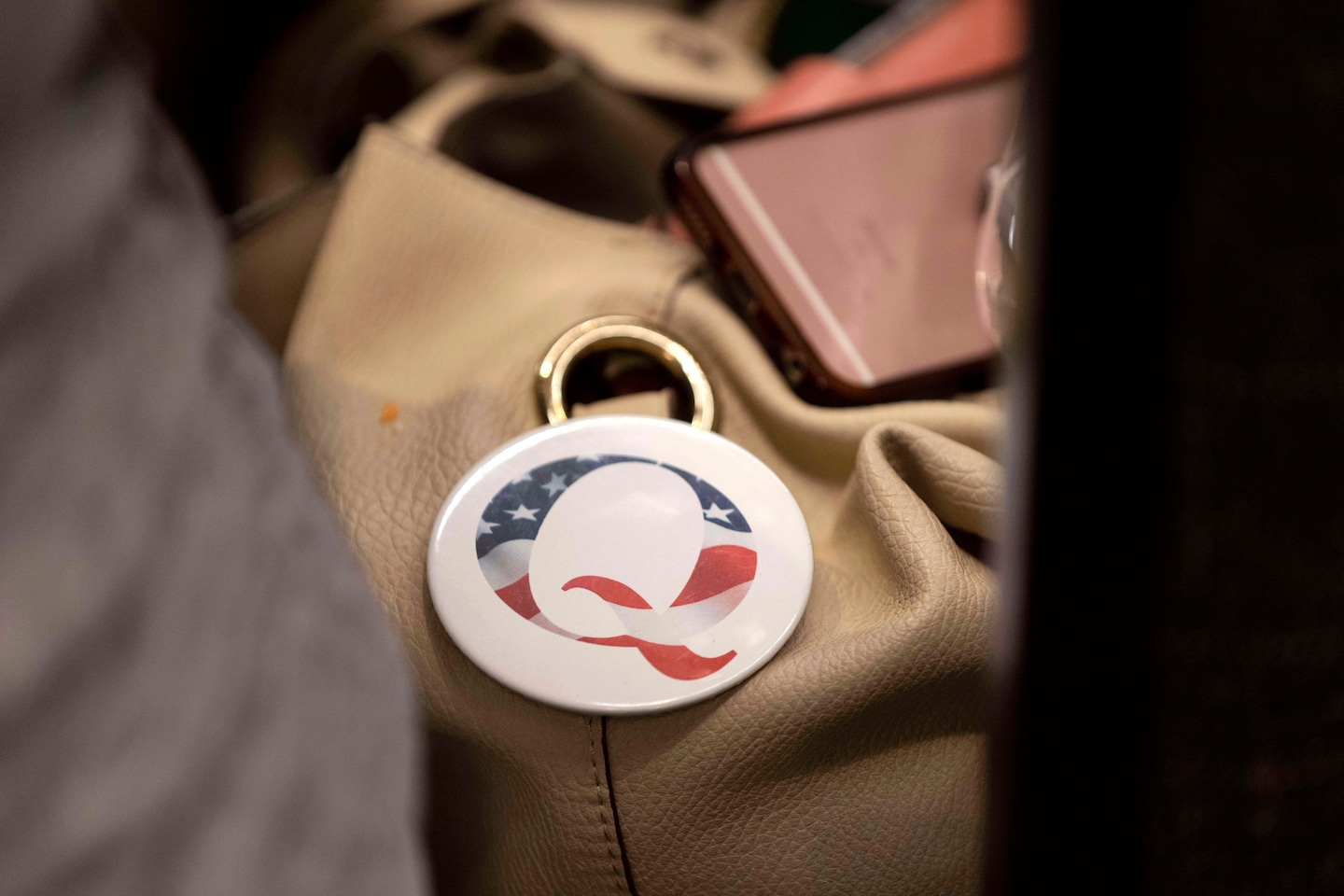Learning to see through conspiracy theories

NLP was founded more than a decade ago by Alan Miller, a Pulitzer Prize-winning former reporter at the Los Angeles Times, and it has become the leading provider of news literacy education in the country. You can learn more about the organization and its resources and programs here.
The material in this post comes from the Sift, the organization’s newsletter for educators, which has nearly 22,000 subscribers. Published weekly during the school year, it explores timely examples of misinformation, addresses media and press freedom topics, explores social media trends and issues, and includes discussion prompts and activities for the classroom. Get Smart About News, modeled on the Sift, is a free weekly newsletter for the public.
NLP has an e-learning platform, Checkology, that helps educators teach middle and high school students how to identify credible information, seek out reliable sources, and know what to trust, what to dismiss and what to debunk.
It also gives them an appreciation of the importance of the First Amendment and a free press. Checkology, and all of the NLP’s resources and programs, are free. Since 2016, more than 42,000 educators and 375,000 students in all 50 states, the District of Columbia and more than 120 other countries have registered to use the platform.
Here’s material from the Oct. 3 edition of the Sift:
Dig deeper: Don’t miss this week’s classroom-ready resource.
1. A single mom in Mississippi embraced multiple conspiracy theories until one day she questioned the validity of an acquaintance’s claim that the Earth is flat. Karen Robertson, 30, shared her journey out of belief in conspiracy theories with a student reporter from PBS Student Reporting Labs. She said a previous abusive relationship led her to these beliefs. “I was trying to make the world make sense, and it was easier to believe that it was a bad place and something was out to get you, and that’s why my life was where it was at and as bad as it was, than it was to realize I had made bad choices.” Robertson encouraged others to question conspiracy theories. “When I challenged my beliefs, it changed my world and it made my life better.”
• Idea: Have students watch the 3:32 PBS NewsHour video of Robertson sharing her story and discuss it as a class. Do they know anyone who embraces conspiracy theories? How have these beliefs affected this person? What kind of conspiracy theories have they heard about? What makes people vulnerable to conspiratorial thinking?
• Related:
— “‘My Brother Is So Far Gone’: How Male Influencers Turned the Men in These People’s Lives Toxic” (Ade Onibada, BuzzFeed News).
• Resources:
— “Conspiratorial Thinking” (Checkology virtual classroom).
— “News Lit Quiz: Avoid the trap of conspiratorial thinking” (NLP’s Resource Library).
— Infographic: “How to speak up without starting a showdown” (NLP’s Resource Library).
Viral rumor rundown
NO: The woman in this video is not NASA astronaut Karen Nyberg.
YES: This video was created for a flat Earth YouTube channel to demonstrate how someone could fake a weightless environment with a green screen.
YES: Creators filmed the footage on Earth, then used a green screen to add a still image from the International Space Station, along with various floating objects.
NewsLit takeaway: Instilling doubt can sometimes spread conspiracy theories more effectively than providing any evidence for them. This video, for example, was not created to prove that NASA uses green screens to lie about space travel; instead, it aims to show how NASA could lie about space travel if it wanted to. USA Today fact-checkers identified the woman in the video as a flat Earth believer acting in a skit, which later went viral. The flat Earth conspiracy theory isn’t as much about proving the Earth is flat as it is to sow doubt about scientific knowledge. There still are a surprising number of people who embrace flat Earth beliefs.
NO: This is not an authentic video of Arizona Sen. Kyrsten Sinema (D) and former president Donald Trump.
YES: This is a digitally altered video based on footage of Trump with a supporter from a 2015 campaign rally and a clip of Sinema’s acceptance speech from November 2018.
YES: This video was created by a content creator known for fabricated hoax photos and videos.
NewsLit takeaway: There are several ways to tell the video is a fake. Sinema’s head doesn’t appear to be the right size for her body. Her hair disappears behind her shoulders and her shirt and neck are artificially smooth. The video racked up tens of thousands of views. On social media, some users acknowledged the video was fake but argued that it might as well be true because it captured something that they envision could happen. This kind of rationalization for misinformation is a red flag.
You can find this week’s rumor examples to use with students in these slides.
• An AI text-to-image generator, DALL-E, was recently made accessible to the public, eroding the line between real and fake images.
• Meta shut down a Russian network of more than 2,000 Facebook accounts pushing pro-Kremlin narratives about the war in Ukraine, including pages that mimicked news sites.
• The disparity in sports news coverage of two separate scandals raises questions about whether White athletes are more favorably covered by media outlets than Black athletes.
• “Hurricane shark” is a well-known misinformation meme — but this time, the footage was legit: The Associated Press confirmed that the viral video of a large fish in a Florida backyard was captured during Hurricane Ian.

